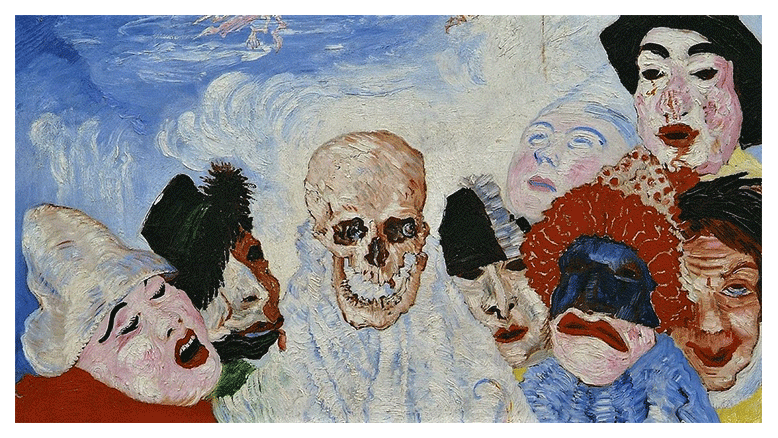Art is nothing but the expression of our dream; the more we surrender to it, the closer we get to the inner truths of the things, our dream life, the true life that scorns questions and does not see them.
Franz Marc
Expressionism was primarily influential at the beginning of the 20th century as an “international tendency” rather than a coherent art movement. It developed around 1905 and continued until the end of the Second World War, introducing new standards of artistic creation. Art appeared at this time as originating within the artist rather than representing the outside world. Therefore, the standard for assessing the quality of artwork became its character more than its composition.
Expressionist artists sought to represent the world from a subjective perspective by using bold colours, exaggerated brushstrokes, swirling, swaying, and distortion of their subject to evoke moods and achieve an emotional effect rather than a physical reality. In short, these techniques attempt to convey the turgid emotional state of the artist reacting to the anxieties of the modern world. For example, through their elongated figural renderings, the expressionist artists also developed a powerful mode of social criticism. They used alienated individuals to illustrate the psychological effects of recent urbanisation, utilising sex workers as symbols of capitalism’s role in emotionally distancing individuals from the city.
Expressionism was initially embraced as an avant-garde or modernist painting style. Later, it expanded to other art forms, including literature, music, theatre, and architecture.
RISE OF EXPRESSIONISM
Expressionism originated in northern Europe, namely Germany, Austria, France, and Russia, before the First World War. Art movements such as Dadaism (a political art movement), Cubism, Futurism, and Surrealism, which challenged the modern world, coexisted alongside Expressionist Art. In reality, Expressionism is a complex and vast term encompassing different meanings throughout history. However, Expressionist Art is often associated with either the artistic tendency that followed as a reaction to Impressionism in France or the movement that emerged in Germany and Austria in the early 20th century.
French Expressionists, for instance, depicted the world from a highly subjective perspective. Dutch artist Van Gogh, in France, revealed his unusual, troubled, and colourful psyche at the time. In contrast, German Expressionism drew inspiration from mysticism, the Middle Ages, and the philosophy of Friedrich Nietzsche, whose ideas were widely accepted and influential. The Russian artist in Germany, Wassily Kandinsky, explored spirituality in art as an antidote to alienation in modern society.
Meanwhile, Egon Schiele and Oskar Kokoschka addressed the hypocrisy of society’s morals with topics such as sexuality, death, and violence as part of Austrian Expressionism. In addition, Edvard Munch was making waves in Norway and across Europe with his wild, intense expressions of the “self” and “psyche.”
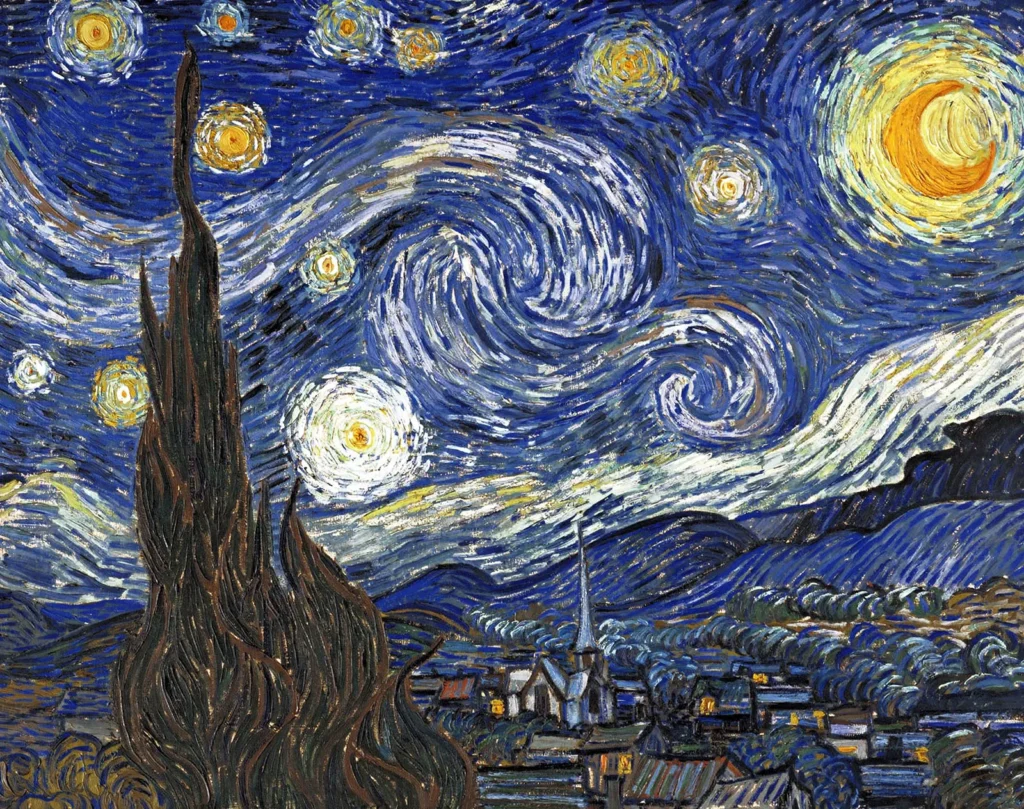
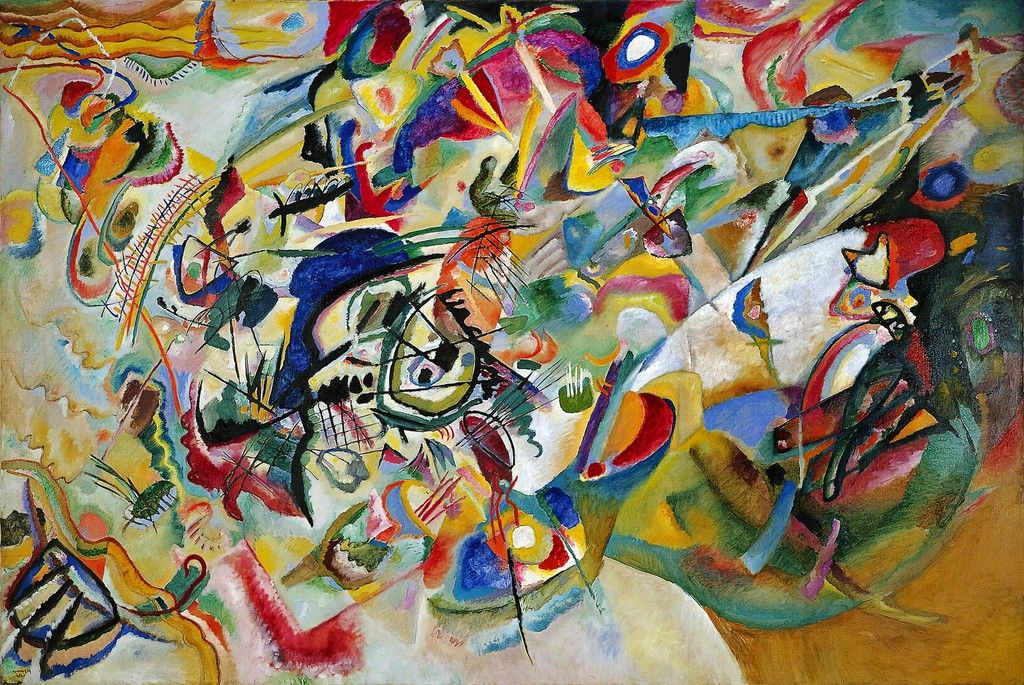
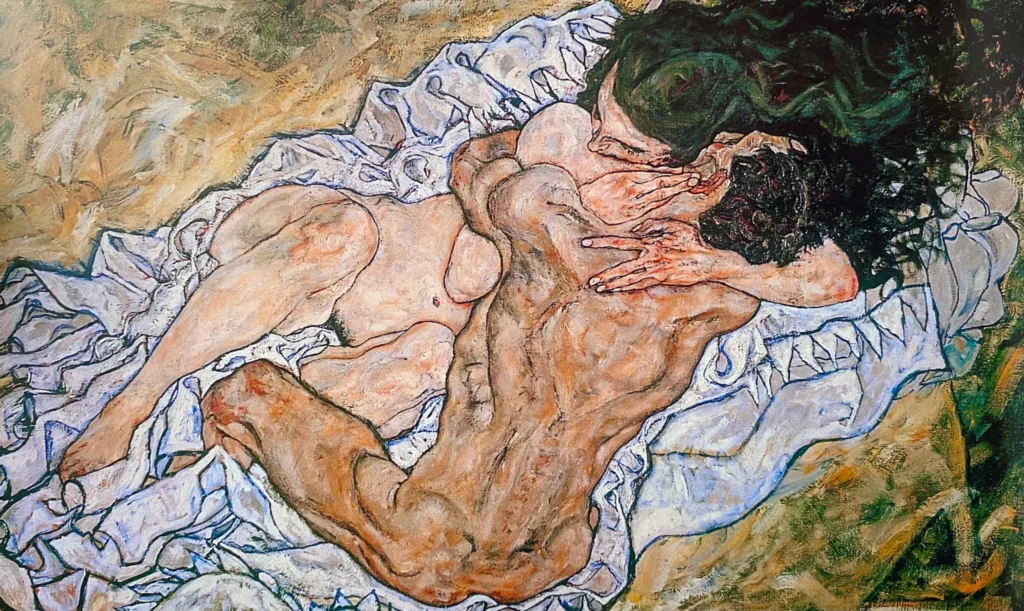
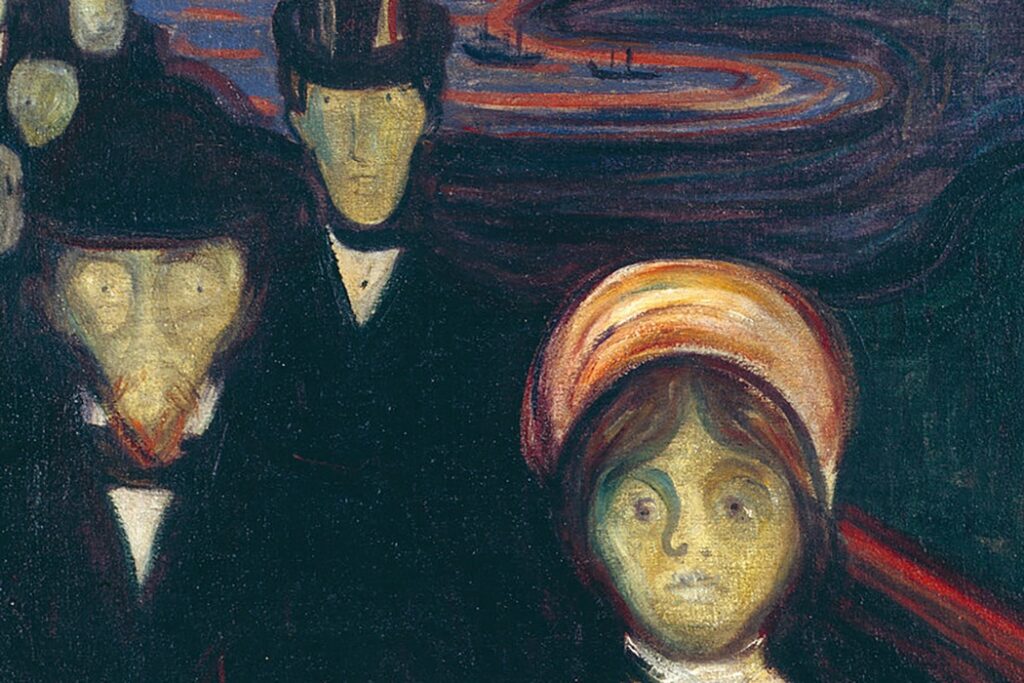
EXPRESSIONIST ART AND ITS ARTISTS
Check it out!
THE SCREAM BY EDVARD MUNCH, 1893
Throughout his artistic career, Edvard Munch specialised in depicting scenes of death, agony, and anxiety in disfigured and emotionally compelling portraits, a dynamic that would gain significant recognition from Expressionists.
Munch depicts the struggle between individuals and society in his iconic painting, The Scream. As Munch walked along a bridge overlooking Oslo, he was inspired to paint this scene from the image. The artist describes, “the sky turned as red as blood. I stopped and leaned against the fence, shivering with fear. Then I heard the enormous, infinite scream of nature.”
Though Munch does not visually see the scene in his painting, he portrays the jolting emotion of the encounter and anxiety toward the tangible world. His representation of the emotional response to this scene later forms the basis of the Expressionists’ artistic interpretations. During the 20th century, Expressionist artists continued to explore the style and theme of alienation, as seen in this painting.
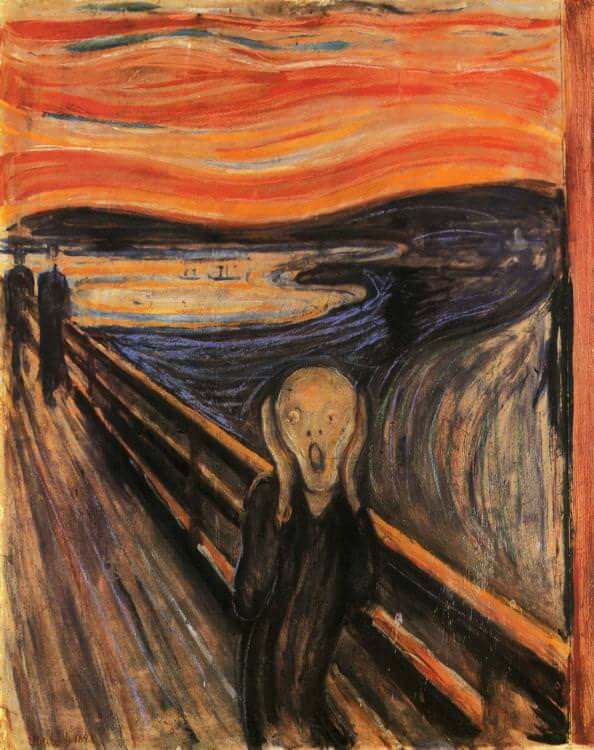
DER BLAUE REITER BY WASSILY KANDINSKY, 1903
As mentioned earlier, Wassily Kandinsky explored mystical ideas to combat social alienation. Der Blaue Reiter is a deceptively simple painting, a lone rider racing across a landscape, but it represents a turning point in the painter’s visual language. In the picture, the sunlight filters through the peak of the hillside, emphasising his interest in contrasts between light and darkness (chiaroscuro), movement and stillness.
The Munich Modernists embraced his canvas for its symbolic connection between Expressionism and Post-Impressionism. And from this work, the collective derived its name in 1911.
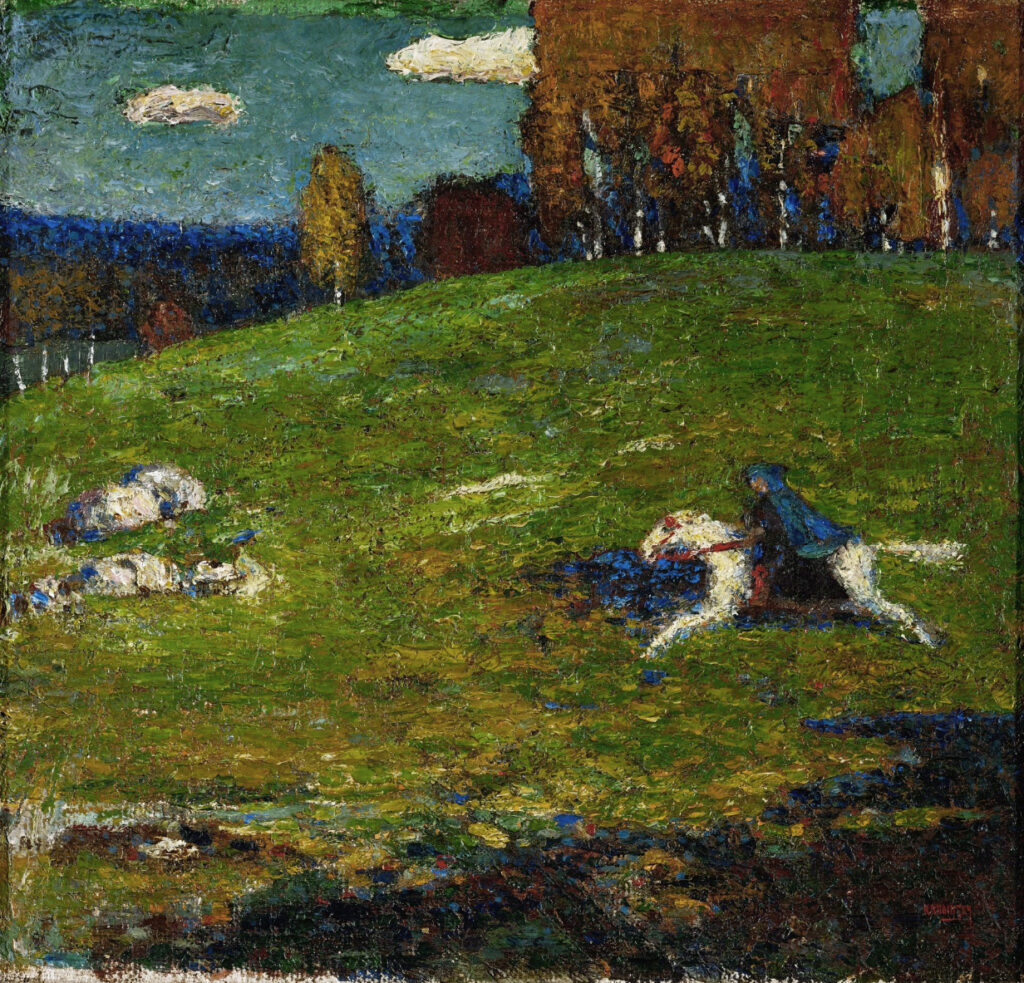
EXPRESSIONISM, LARGE BLUE HORSES BY FRANZ MARC, 1911
The painter, printmaker, and watercolourist Franz Marc was a crucial part of Der Blaue Reiter and is known for incorporating animal symbolism. His Blue Horses canvas belonged to a series of works. It focused on horse themes, which he viewed as an expression of spiritual renewal. It shows the influence of Cubism and Orphism with the bright colours, the distortion of space, and geometric forms. Despite being influenced by his contemporaries, Marc’s emphasis on fantasy subjects derived from the material world, like the Blue Horses in this painting, is unique.
With his departure from realistic depictions, the artist moved towards spirituality, emotion, and authenticity. Marc used colour symbolically rather than descriptively, as many Expressionists did. And the expressive qualities of his palette helped him convey the spiritual blue beasts in his artwork.
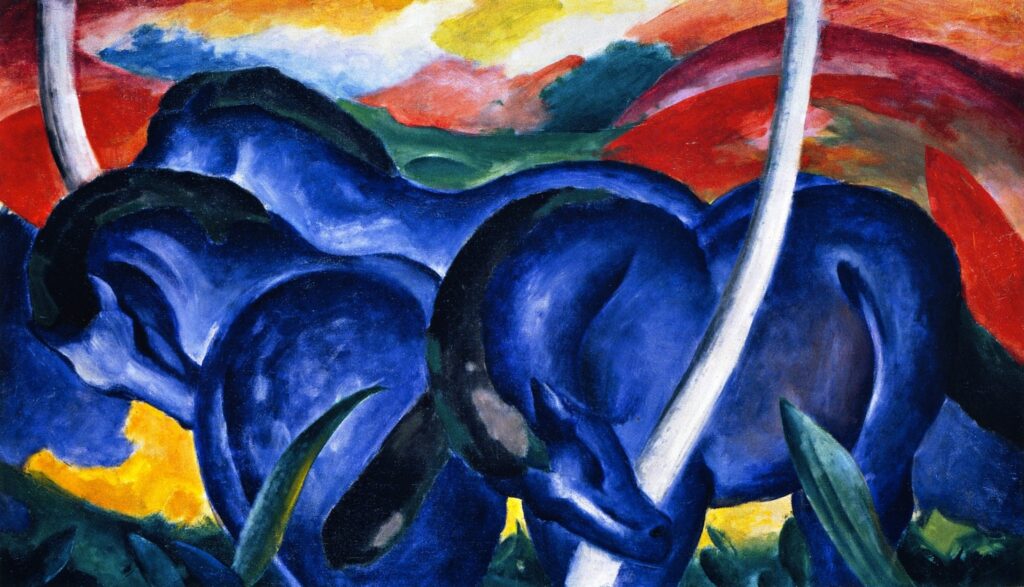
STREET, BERLIN BY ERNST LUDWIG KIRCHNER, 1913
Kirchner painted many Berlin street scenes, but this particular piece is perhaps his most well-known, if not his entire collection. The combination of unpolished, geometric brushstrokes, acidic colours, and elongated forms conveys the ambience of the street. They exemplify the stylistic break with tradition that Die Brücke (the German Expressionist artists) sought. And being a founding member of the collective, he renounced Impressionism and accurately depicted figurative forms. Street, Berlin depicts an alienated, urban street procession in a stunningly distorted manner. He bent and contorted his skinny figure like grass blades in a meadow, defying realistic depictions of form. In the Street, Berlin, Kirchner positioned two sex workers, identified by their signature plumed hats, as the painting’s central focus.
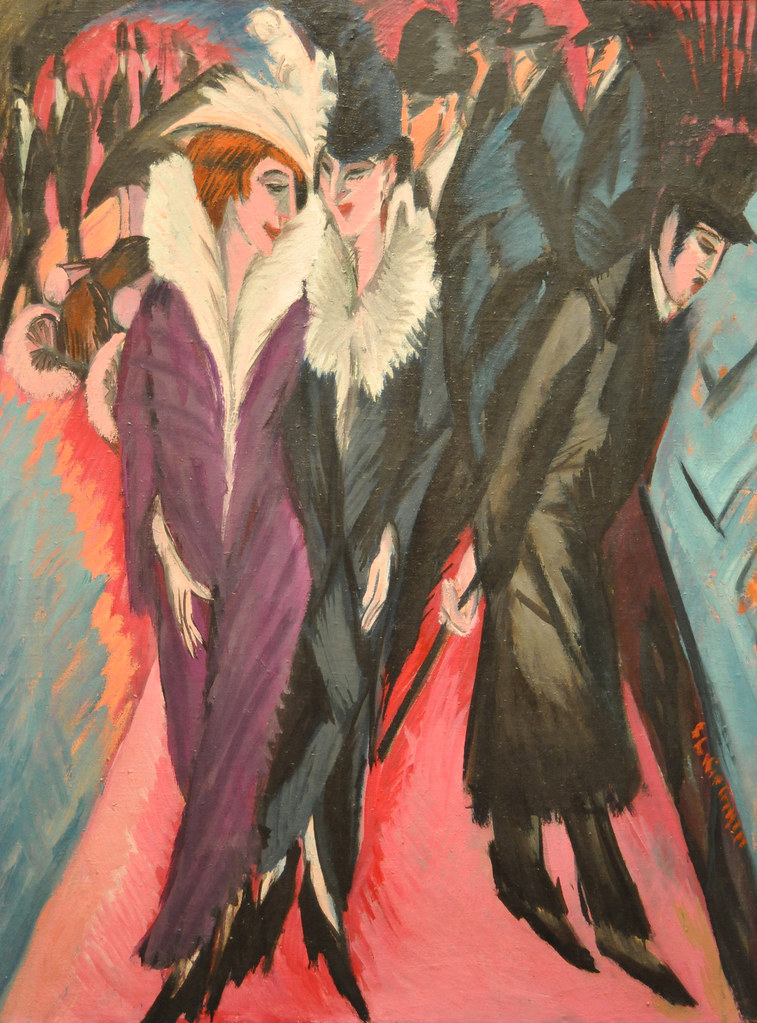
THE BRIDE OF THE WIND BY OSKAR KOKOSCHKA, 1914
An artist, poet, and playwright, Oskar Kokoschka, was a pioneer of Expressionism and was known for his expressionistic portraits and landscapes. Through vivid colours, formal distortion, and violent brushwork, Kokoschka expressed human character and psychology throughout his artworks.
The Bride of the Wind, a meditation on his affair with Alma Mahler, is one of his most celebrated figurative paintings. As a result of the passionate romance, the artist produced numerous drawings and paintings of his muse. The artwork shows Mahler sleeping beside Kokoschka, wide awake and staring into space. His expressive brushwork became more turbulent following their breakup in 1914.
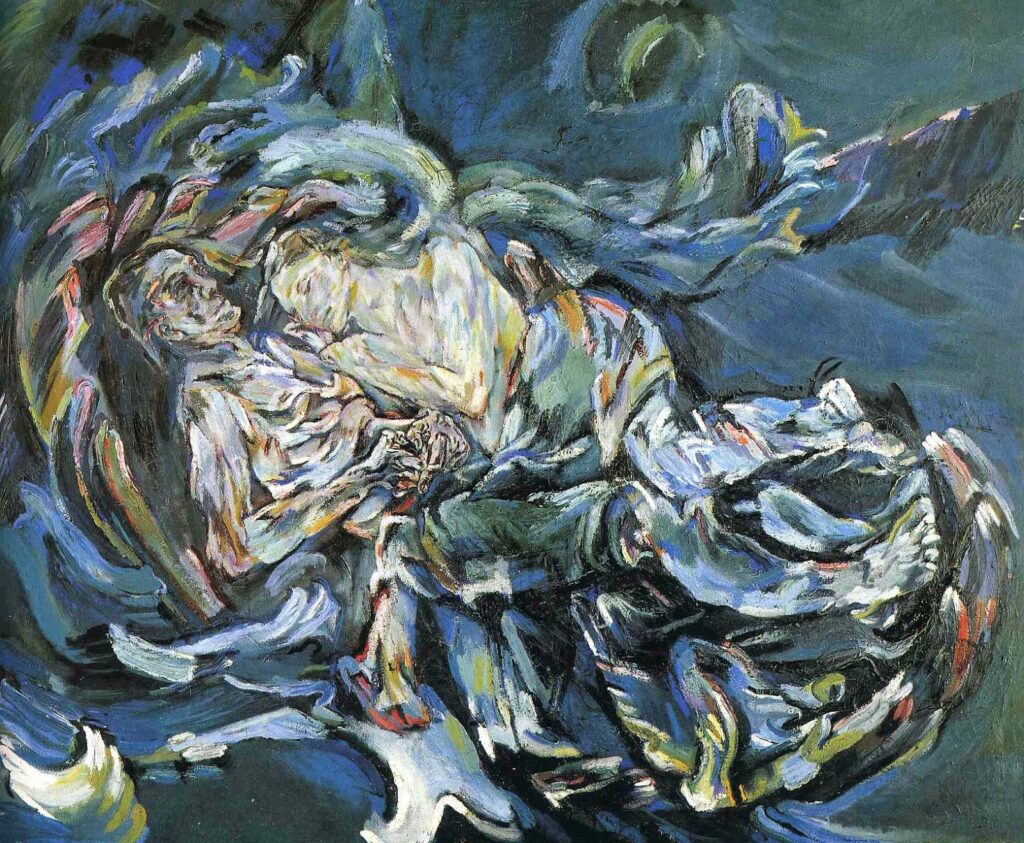
EXPRESSIONISM PORTRAIT OF A MAN BY ERICH HECKEL, 1919
Heckel experimented extensively with woodblock printing, a favourite medium of many Expressionists. He initially found its raw emotionalism and stark aesthetic appealing, not to mention its German heritage. His works generally depicted images of nudity and city life, but this self-portrait takes on a more reflective subject. The illustration portrays a feeling of spiritual, psychological, and physical fatigue reflected in the heavily drawn face, distorted jaw, and weary eyes that seem to gaze into the distance. His artwork, rather than depicting a naturalistic self-portrait, represents the spirit of the time and the national sense of weariness inherent to Expressionist art.

LATER PHASES OF EXPRESSIONISM
Are you curious?
ABSTRACT EXPRESSIONISM
Abstract Expressionism, which emerged in New York in the 1940s and 1950s, has never been a perfect art movement. In the 1930s, the instability of European politics brought several leading Surrealists to New York. And Surrealism’s emphasis on exploring the unconscious profoundly influenced many Abstract Expressionists. Their interest in myth and archetypal symbols inspired them, leading them to perceive art as a battle between self-expression and chaos.
Most of these Abstract Expressionists reflected a Leftist political ideology generated from subjective experiences. However, many continued to adopt the outspoken attitude of modernists. One example of the art form is Autumn Rhythm by Jackson Pollock, 1950. In the piece, the artist pours, splatters, and applies paint in a highly dynamic style from above to a canvas on the ground, which resembles Pollock’s famous “drip” works.
In expressing internal emotional turmoil through gesture, line, texture, and composition, Pollock made a breakthrough in his career, putting the New York School of Painters on the map.
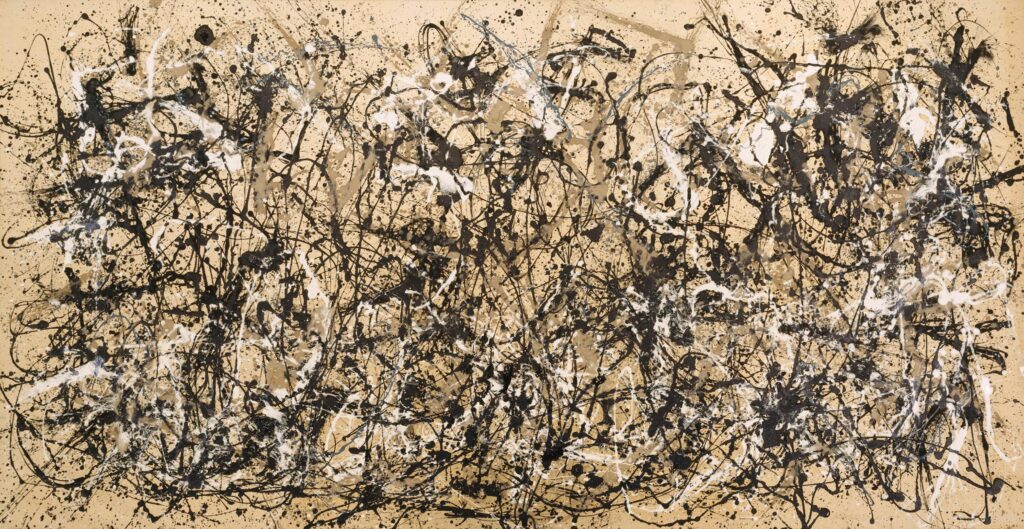
NEO-EXPRESSIONISM
Next is Neo-Expressionism, which started around the 1970s. In contrast to the immediately preceding art movements, Neo-Expressionists used highly textured and expressive brushwork and intense colours to depict their subjects. A primary concern with Neo-Expressionist artists was their association with buying, selling, and the commercial art market, which included galleries and media hype, typical of the Reagan era. Many critics questioned whether the Neo-Expressionists were genuinely motivated. As a result, its popularity soon led to its downfall. One representation of the art form is Adieu by George Baselitz, 1982.
Many Neo-Expressionists followed Baselitz, who grew up in East Germany after World War II. It appears that the figures in the painting have no point of origin, hovering awkwardly between the top of the picture and the blank space beneath their heads. Likewise, Adieu, the artwork’s title, suggests a separation, demonstrated by one figure moving away from the other.
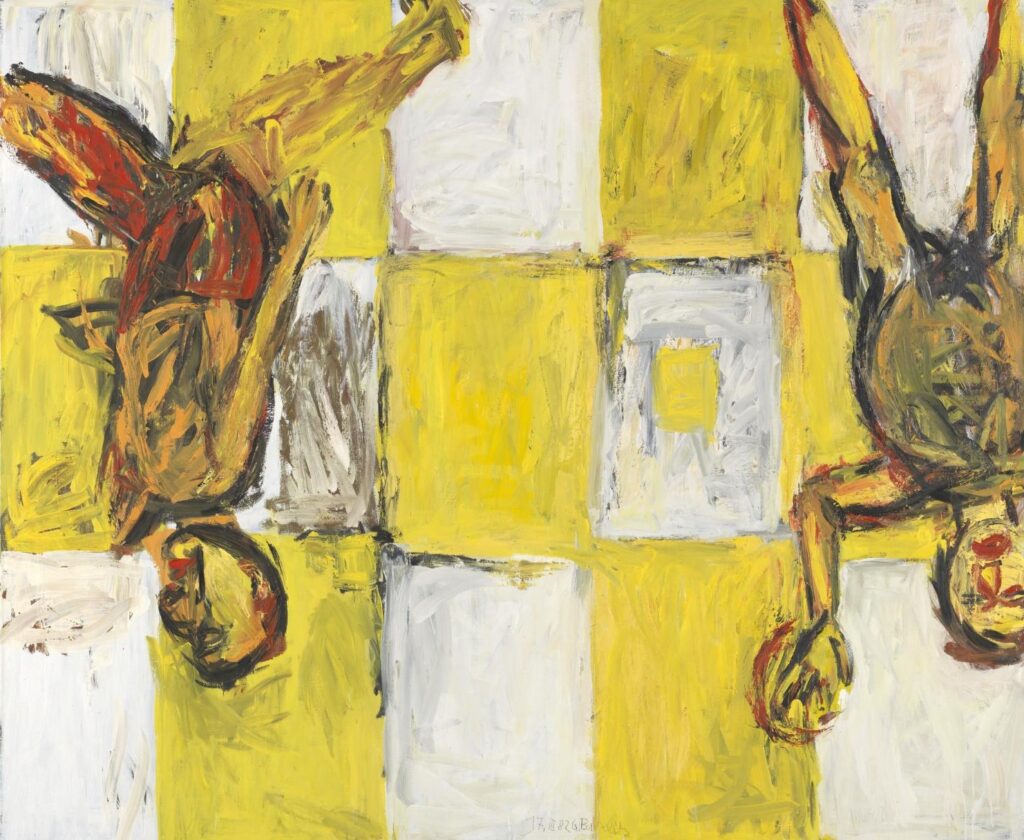
FIGURATIVE PAINTING
Then, the School of London, a group of artists who explored similar themes after World War II, revolutionised figurative painting. After World War II, the School of London artists attempted to reckon with recent history and envision new ways of seeing themselves and others. Like contemporary philosophers exploring Existentialism and Phenomenology, the artists sought to create new ways of interacting by breaking down old habits and modes of seeing. Whether their paintings were smooth or thickly encrusted, School of London artists hoped to convey the psychological depth of their subjects and themselves. They created complex portraits and landscapes that spoke to turbulent times through their subjective viewpoints, sometimes empathetic and sometimes damning.
One notable example of the art form is the 1959 Sleeping Figure by Francis Bacon. In this piece, a nude figure sleeps on an oversized black armchair against a grey, sterile background. Even though the figure is asleep, it appears alive and pulsating with hidden energy. Works like Sleeping Figure, Bacon became the most famous and successful of the School of London painters. Besides the Old Masters, his work also drew on his studies of photography, especially Eadweard Muybridge’s motion studies.


